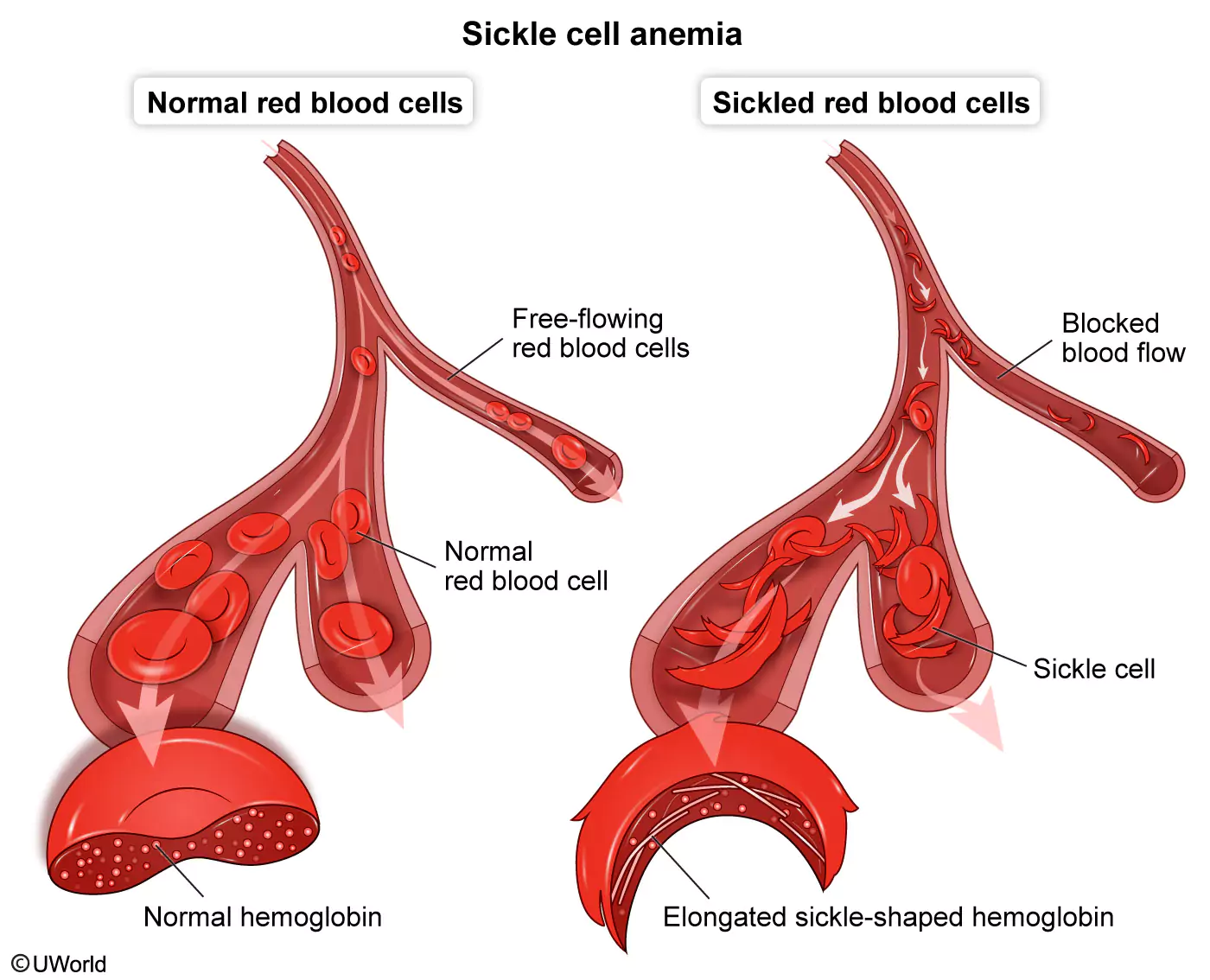The nurse is caring for assigned clients. The nurse should first assess the client with
Below is the code for an example image modal link
Flashcards
/* -- Un-comment the code below to show all parts of question -- */
| A. sickle cell disease who has new onset pain rated as 9 on a scale of 0-10 | ||
| B. pneumonia who has a temperature of 100.6 F (38.1 C) and is receiving IV antibiotics | ||
| C. Graves disease who has a heart rate of 110/min and a blood pressure of 122/85 mm Hg | ||
| D. diabetes mellitus who has an elevated serum glucose level and is requesting insulin lispro prior to a meal |
Sickle cell disease is a hereditary blood disorder characterized by RBCs that become sickle-shaped, rather than oval, when deoxygenated. Dehydration, stress (eg, infection), and hypoxia cause sickled RBCs to clump together and obstruct blood flow, causing episodes of acute pain.
Severe pain occurs due to impaired capillary blood flow (ie, vasoocclusion) and tissue ischemia. Without prompt recognition and intervention, vasoocclusion may lead to irreversible tissue damage (eg, myocardial infarction, limb necrosis, stroke) and death (Option 1). Therefore, the nurse must prioritize care of this client.
(Option 2) Fever is a common manifestation of pneumonia. This client is already receiving treatment (ie, IV antibiotics) that will resolve the infection and fever.
(Option 3) Tachycardia can occur in clients with Graves disease because of excess thyroid hormone secretion. This client requires further assessment, but this can be safely delayed.
(Option 4) Hyperglycemia is a common finding in clients with diabetes mellitus. This client's serum glucose level should be managed, and the client should receive insulin lispro before the next meal, but this can be safely delayed.
Educational objective:
Severe, acute pain in clients with sickle cell disease is indicative of an acute painful episode caused by vasoocclusion and tissue ischemia. Early recognition and intervention are essential to prevent irreversible tissue damage (eg, myocardial infarction, stroke) and death.
Lecture References :
- Adult Health - Sickle Cell Disease






